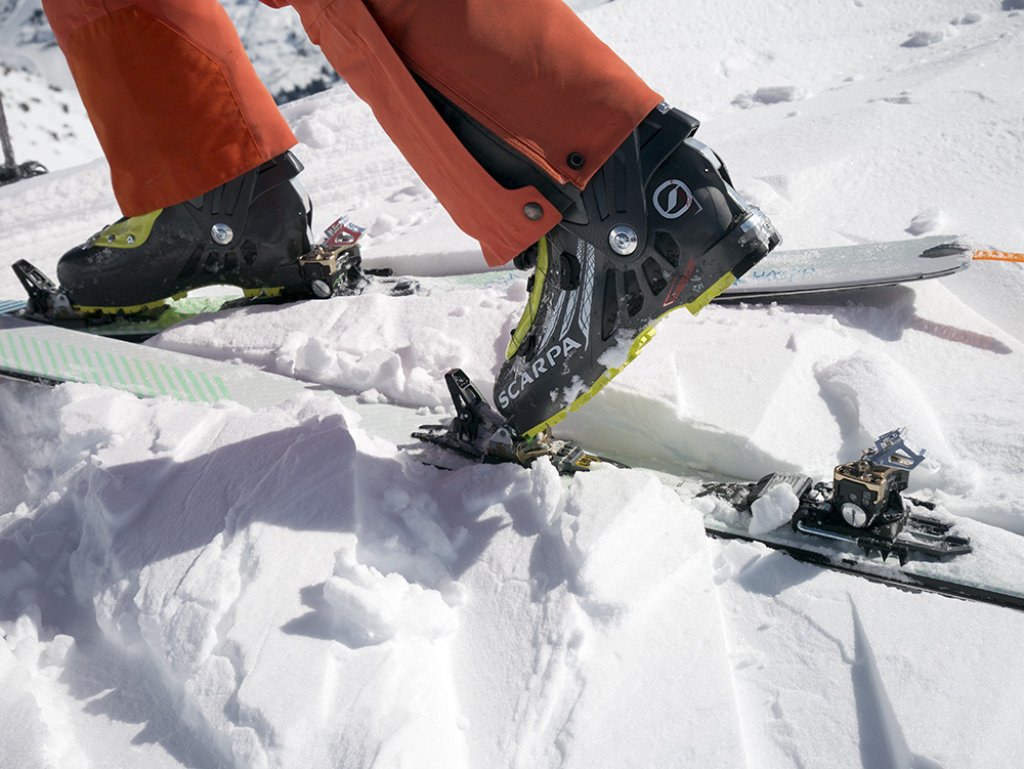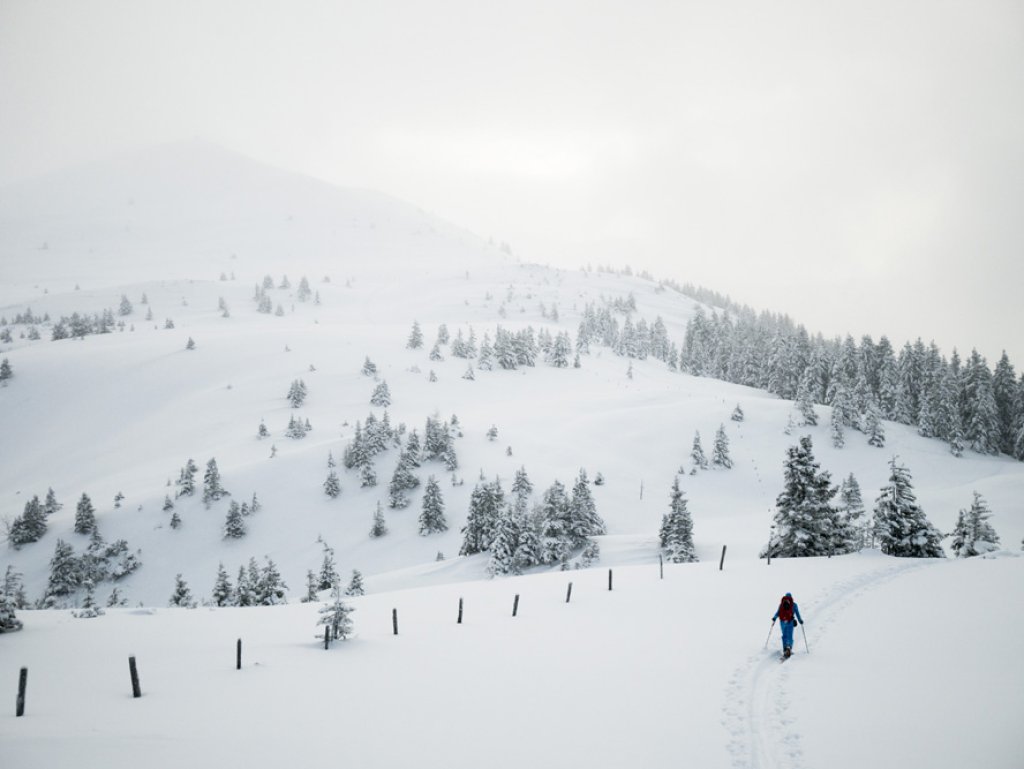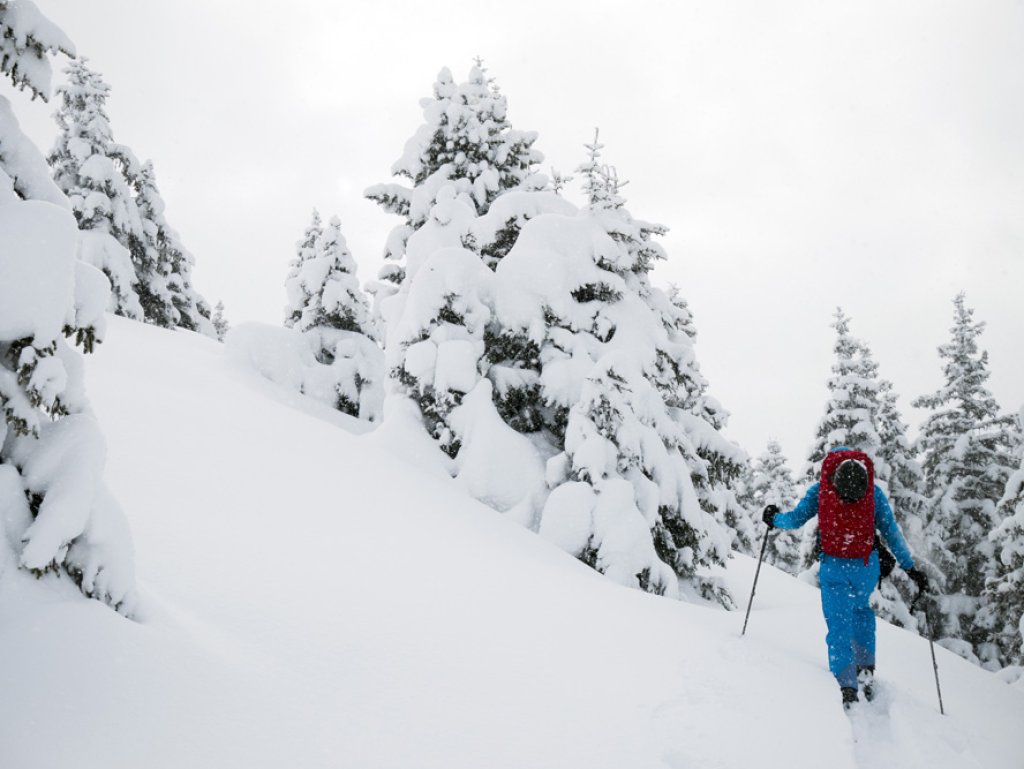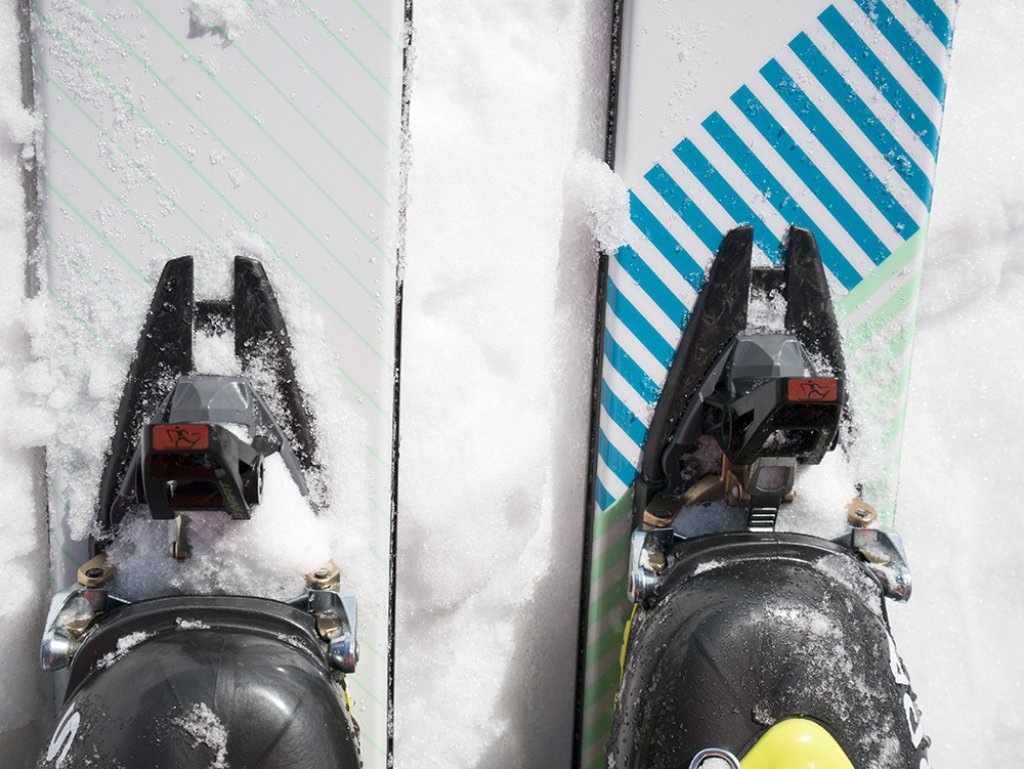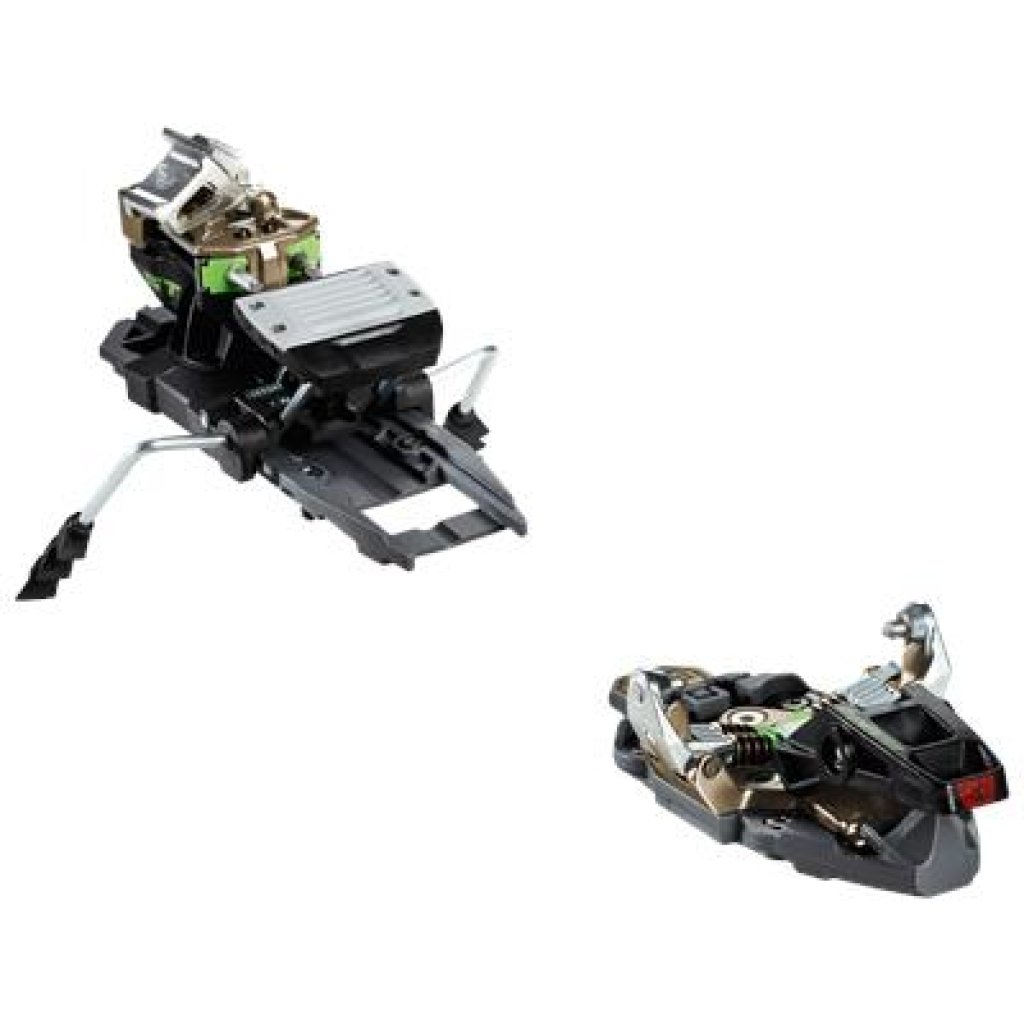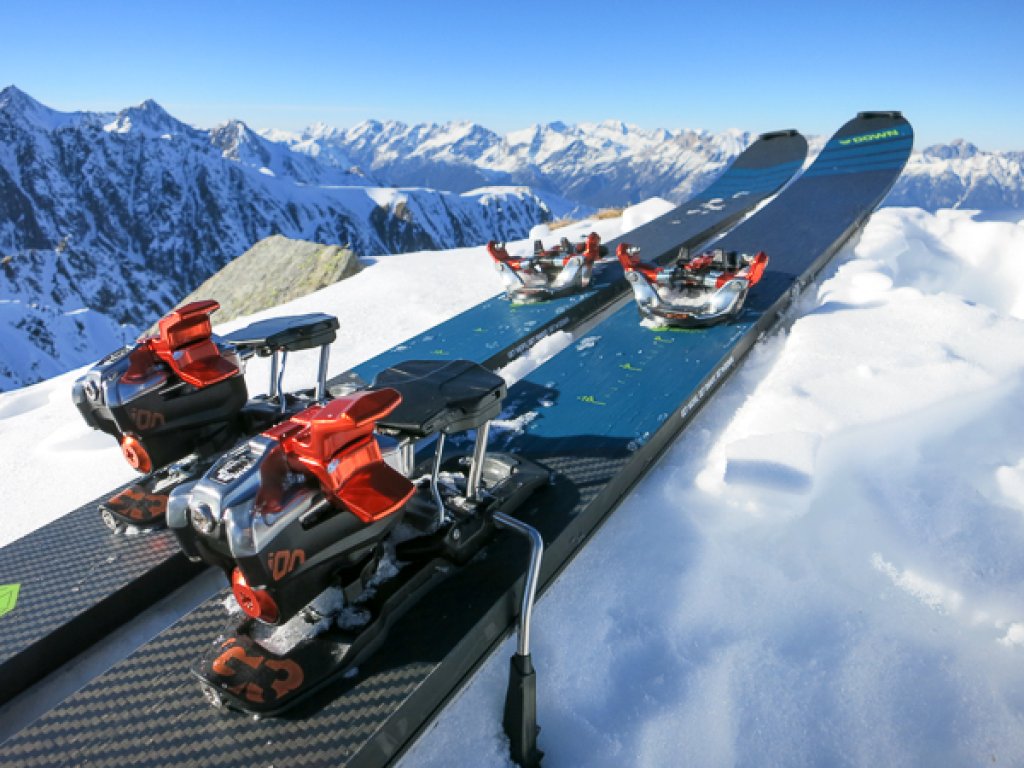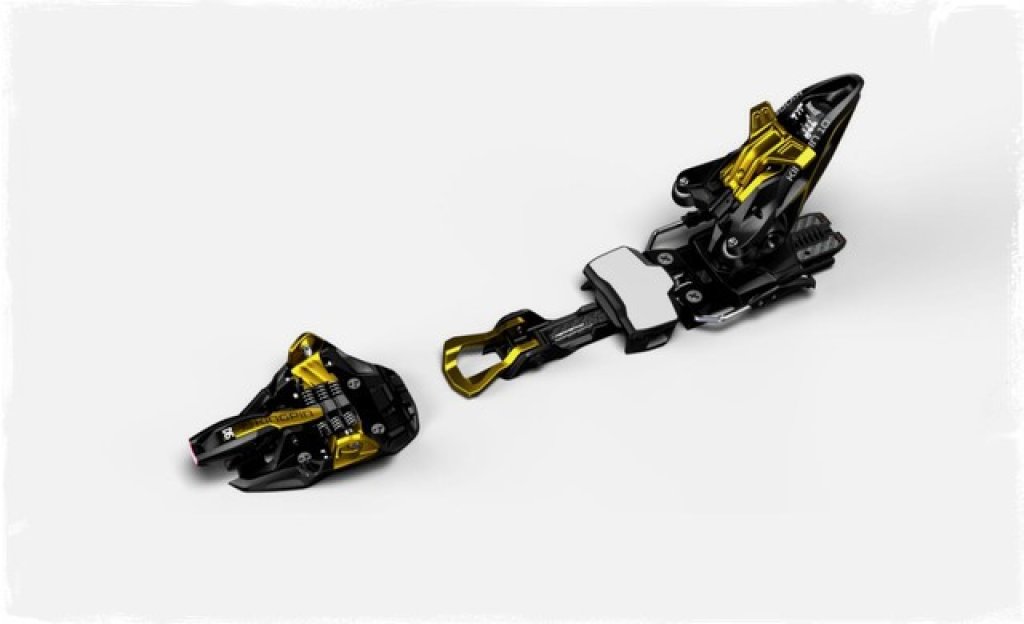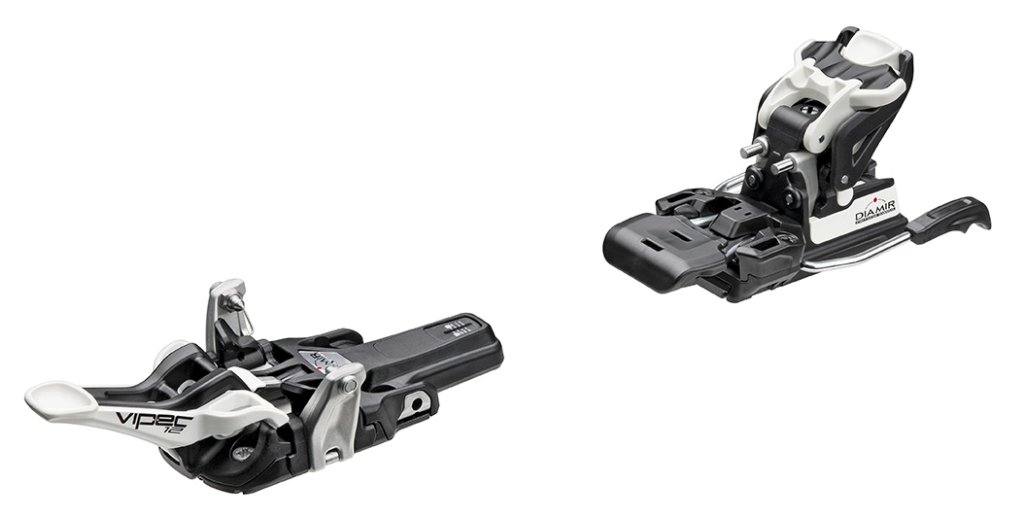The TLT Radical 2.0 FT combines several new features, all of which are already known from other binding models, but have not yet been combined in this way and are certainly not available in a similarly lightweight package. The toe piece is slightly pivoted (like the Dynafit Beast 14), the rear piece now sits with a certain amount of contact pressure on the boot (like the G3 Ion) and the stoppers only fold up when you step on them in touring mode (like the Fritschi Vipec, for example). As with the first Radical (and before that the Vertical), in addition to the "FT" version tested here with release values of 5-12, there is also an "ST" version with values of 4-10.
First impression
At first glance, the binding hardly differs from a "normal" Radical. On closer inspection, you will of course notice the rotating toe piece and the new stoppers. The binding also looks a little "bulkier" and a little higher. When mounted on the ski, the stand height is slightly higher than with the Radical.
Tester and test conditions
I am 183cm tall and weigh around 75kg. I go on a lot of ski tours, sometimes longer ones, but the focus is always on the descent. I'm less of a summiteer and am actually always on the lookout for untracked powder snow. I mounted the binding on a DOWNSKIS LD102 in 186cm and tested it with various boots, namely the Dynafit TLT7 Performance, the Scarpa F1 and the Scarpa Maestrale RS. I've been using them since this season and have used them on most of my tours so far. I estimate that I have used them on 20 days so far.
In recent years, I have mainly used the Fritschi Vipec, Dynafit Beast 14 and 16 as well as several models from the Dynafit Vertical range for touring.
Test report
Getting into the binding takes a little getting used to. With classic Dynafit pin bindings, you are used to the fact that as soon as the boot is locked into the pins on the front jaw, you can simply push it firmly into the back jaw with your heel. Not so with the Radical 2.0! The rotating toe piece means you have to be much more careful here. If the toe piece is slightly twisted, you just hit your ski boot hard on the pins without really having a chance to lock in. I quickly got used to it. In difficult terrain, it helps to briefly lock the toe piece, which locks it in the middle, then press the boot into the rear toe piece and then release the lock on the toe piece again.
